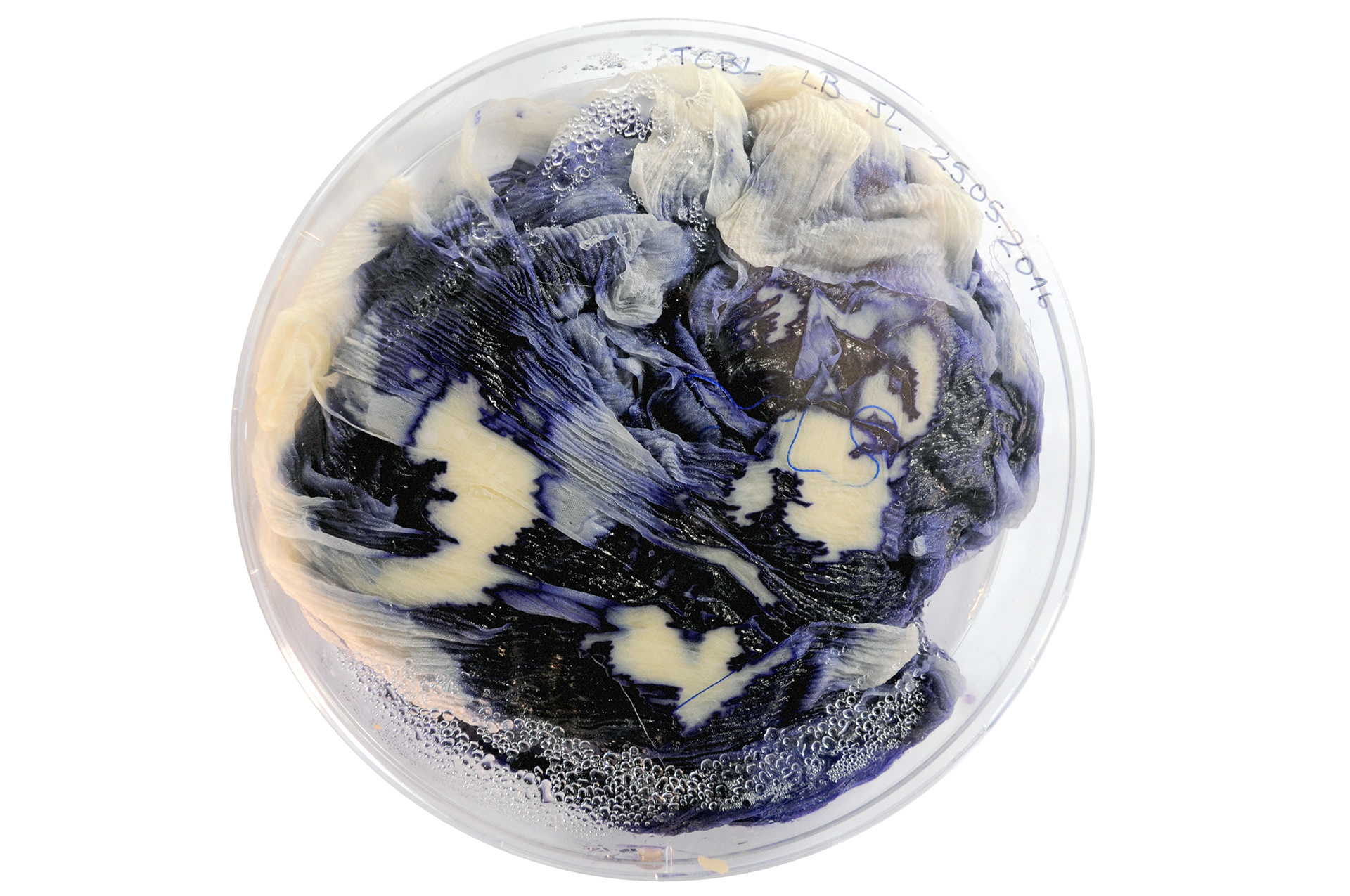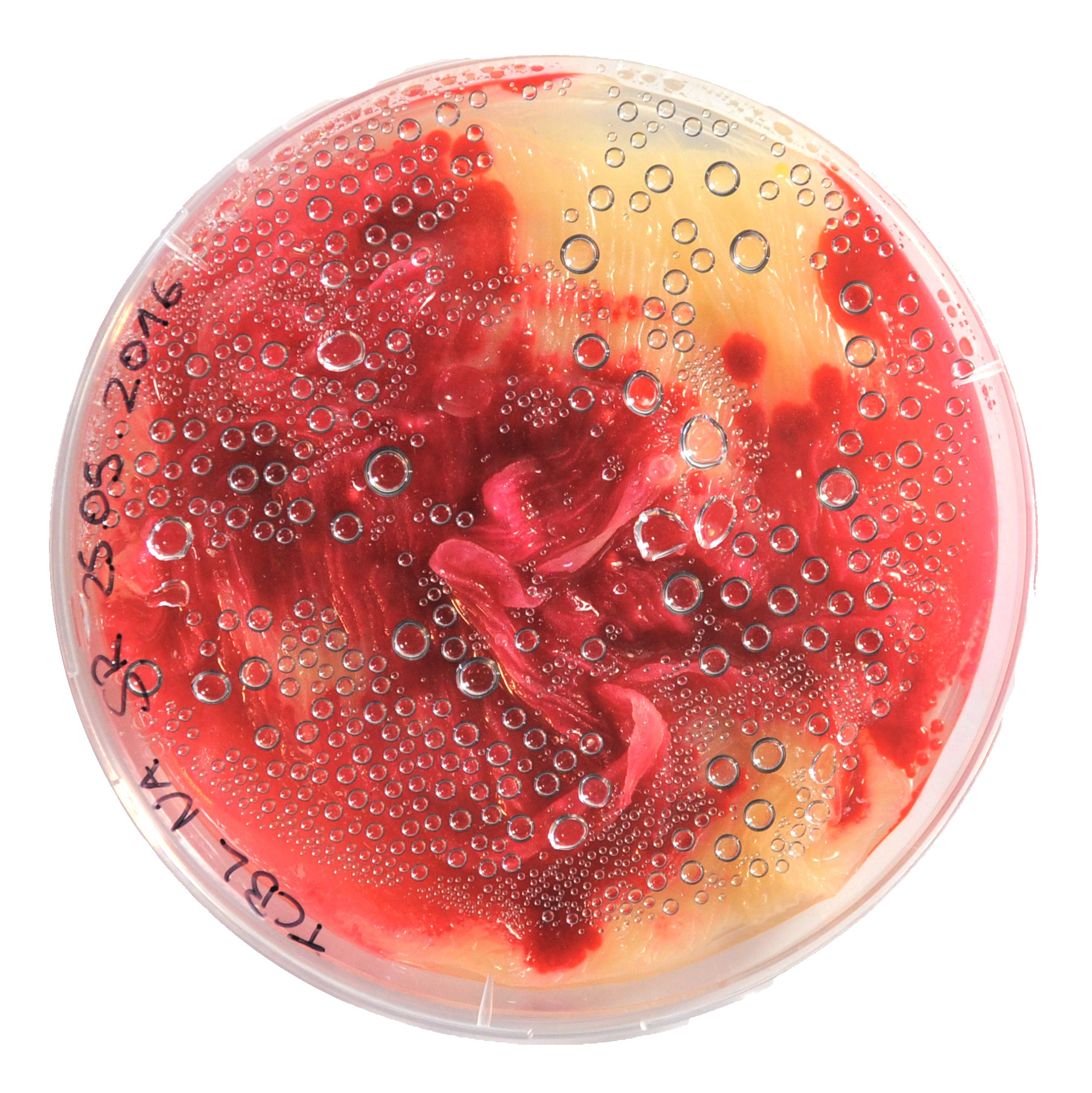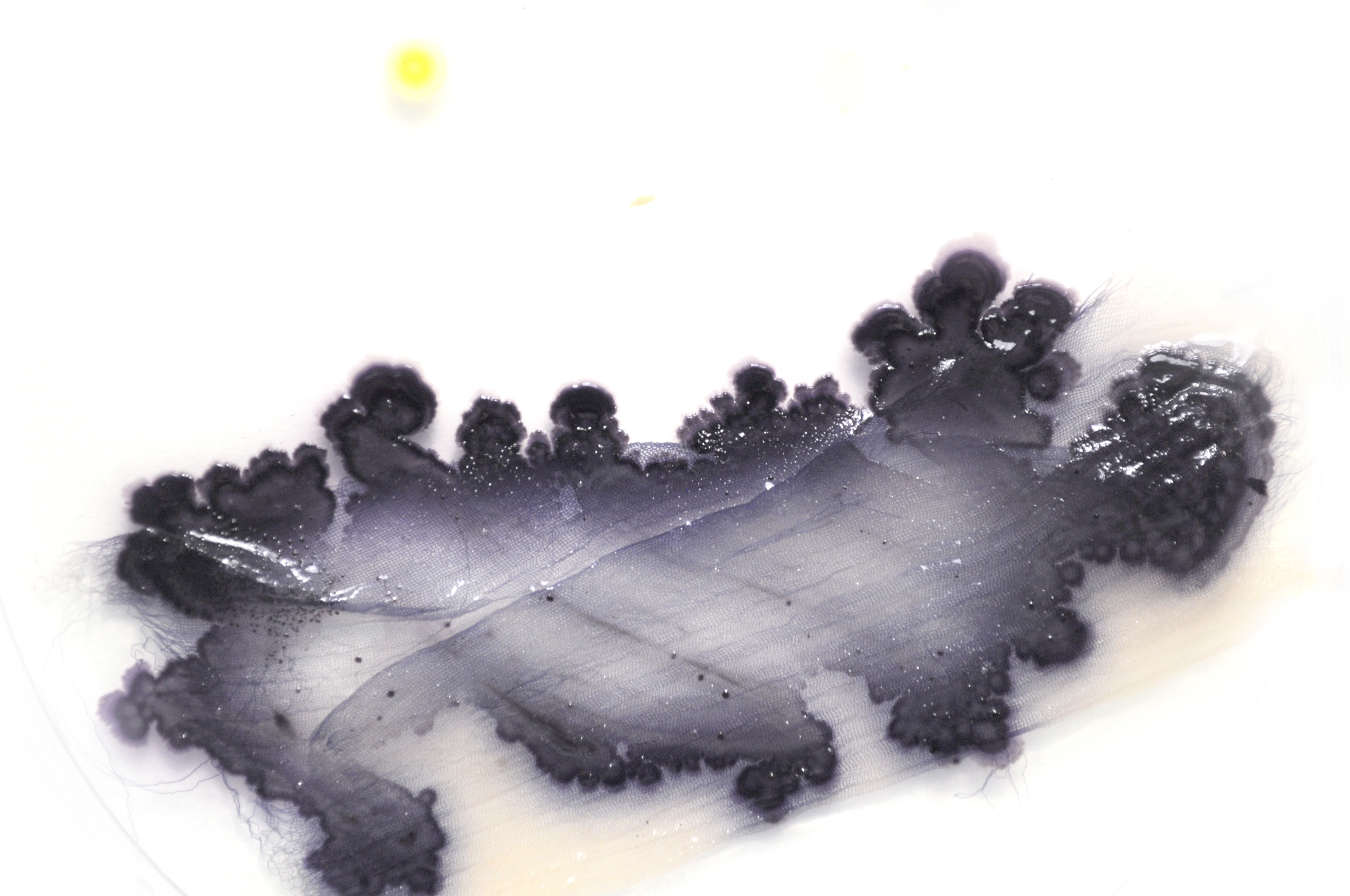Concept



TEXTILE DYEING WITH BACTERIA
BioShades is a project that researches how we can change the way we currently dye textiles, looking at alternatives such as implementing pigmented bacteria in the process of dyeing.
The creative research of BioShades lead us to two main methodologies:
BACTERIAL PIGMENT EXTRACTION and DIRECT BACTERIAL GROWTH.

Bioshades is a creative exploration of how textiles could be dyed in a less polluting way, working with pigments produced by living bacteria.
In the fashion and textiles field, one of the least known but most polluting processes is the dyeing and processing of textiles. At every step of the process, polluted waste waters are released in the environment daily, but it wasn’t always like this. Before the discovery of synthetic dyes, textiles were dyed with natural dyes: plants, flowers, roots, insects and minerals. Synthetic dyes brought color stability, durability and fastness, but at a certain environmental cost.
Todays low cost and accessible technologies allow for creative research at the intersection of fashion and biology, fostering projects such as bioshades.
The project focuses on both research and knowledge sharing. In the research various bacterial strains known for producing pigments, were tested to stain textiles. The selected bacteria were studied and documented in a more accessible and less formal way to make the information accessible to a broad public. This type of documentation led also to a new narrative and a common language between creatives and scientists. Two procedures have been fully documented and tested: how to dye textiles with pigmented bacteria such as Janthinobacterium Lividum and Serratia marcensces and how to extract bacterial pigments.
In both cases the dye stuff is produced by compounds in the bacteria themselves, such as violacein, prodigiosin, indigoidine, carotene, etc.
The first method has a collaborative character: the designer determines a specific framework for the textile design, which interacts with the natural growth of the bacteria but is unable to control it. This procedure creates beautiful patterns on textiles, generated almost as a collaboration between the bacteria and us. The value is in the natural uniqueness of the patterns created, which works towards slower processes with local impact. The process is entirely safe and offer a less chemically intensive and more environmentally friendly process.
The second methods explores the extraction by solvent of the pigment compound produced by the living bacteria.
This research line allows to use the harvested pigments for fully dyed fabrics, but also screen printing, dip dyeing and painting. Pigment extractions based on the same solvent may be mixed for more variation of shades in the colour, offering a larger palette.
WHAT ARE BACTERIA?
Bacteria are single-celled organisms, dwelling nearly everywhere on Earth, from the bottom of the sea to the skin of animals, from our houses to our own bodies.
In the images above you can examine how different bacteria or combinations of them create different pigments, based on their ability to produce various compounds, such as pigments. The starting research subject was Janthino Bacterium Lividum (violacein), followed by Serratia Marcenses (prodigiosin), Vogesella Indigofera (indigodine), Athrobacter …, Microccocus Luteus (carotene) and Micrococcus Roseum, to name a few.